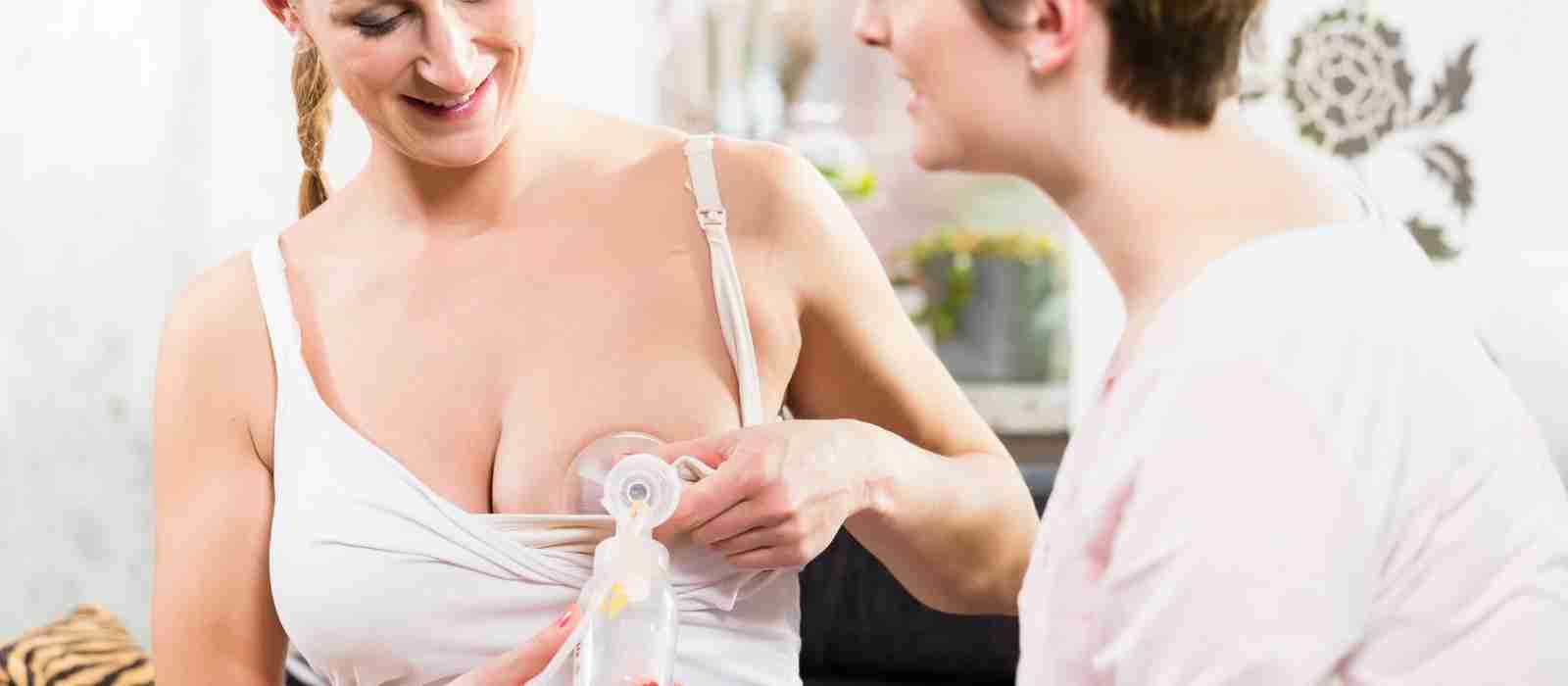Express As Much Milk As Possible
If you are using a breastpump to remove (express) milk for your baby, it is very important that you have correctly-fitted breastshields. The breastshield is the part of the pump collection kit that fits directly over your nipple and forms a seal around the areola (the darkened part of your breast).
The breastpump works by creating a vacuum, which gently draws your nipple into the tunnel of the breastshield–just like your baby would draw it into the mouth with sucking. A correctly-fitted breastshield will help make your pumping comfortable, and allow the pump to remove as much of your milk as possible with each milk expression.
Medela Breastshields – 5 Different Sizes
Medela PersonalFit™ breastshields are available in four sizes: Medium (24 mm), which is the size in Medela’s breastpump kits; Small (21 mm), Large (27 mm), Extra Large (30 mm), and XX Large (36mm). Medela’s breastpump kits make it easy to use a larger or smaller breastshield, because all sizes are designed to fit into the same connector on the collection kit.
Many women appear to benefit from a size other than the standard 24 mm breastshield. In one study, many mums were fitted with either a Large or Extra Large breastshield within the first days after birth, and even more mums eventually used these larger sizes in order to pump comfortably and effectively. It is almost impossible to tell which size breastshield is the best fit without watching the nipple movement during pumping.
The following tips will help you determine whether a different size breastshield would be right for you. Then, you can discuss your observations with your nurse or lactation specialist.
Choosing the Correct Size Breastshield – Signs to Look For
To determine whether you think you might need a Large or Extra Large breastshield, look at your nipple as it is drawn into the tunnel of the shield during pumping. It should move freely and easily, and should not rub against the sides of the tunnel.
If the breastshield fits tightly, your nipple will rub against the sides of the tunnel with each vacuum movement of the pump. After several pumpings, you may notice that the outside of the nipple (rather than the nipple tip) is tender or sore. You may also see a little ring of skin flecks in the tunnel of the breastshield after you pump.
While a little circle of milk in the tunnel is normal, a ring of skin flecks probably indicates that the tunnel is too small, and that you would be more comfortable with a larger breastshield. When your nipple moves freely in the tunnel of the breastshield, you will also note a gentle pulling movement in the areola each time the pump cycles. If you do not see any movement in the areola with the pump vacuum, the breastshield is probably too small.
What Happens When You Use the Wrong Size Breastshield?
A tight breastshield can affect breast emptying and lead to problems with milk supply. During pumping, your milk flows out of the breast due to a combination of the pump’s vacuum and your milk ejection (or let-down) reflex. However, a tightly-fitting breastshield does not allow good breast emptying–even with the best breast pump and a strong milk ejection reflex–because it squeezes the small ducts inside the nipple that carry your milk out of the breast.
Ordinarily, these ducts increase in size when you feel milk ejection so that the milk can flow out of the breasts quickly and easily. However, if the ducts are squeezed by a tightly-fitting breastshield, some milk stays behind in the breast.
Eventually, this incomplete milk removal can lead to plugged ducts, mastitis, and problems with low milk volume. You may note breast engorgement that seems to last a long time–or little “knots” or hardened areas in the breast that do not seem to empty with milk expression.
Choose A Medela Personalfit Breastshield
If you have either or both of these symptoms–nipple tenderness around the outside surface of the nipple or problems with breast emptying– your pumping will probably be improved with a larger size breastshield.
You will want to correct this problem as soon as possible after your baby’s birth before the nipple tenderness and back up of milk in the breasts affect your milk supply. For more information or to purchase Medela’s PersonalFit breastshields, contact your lactation specialist.




